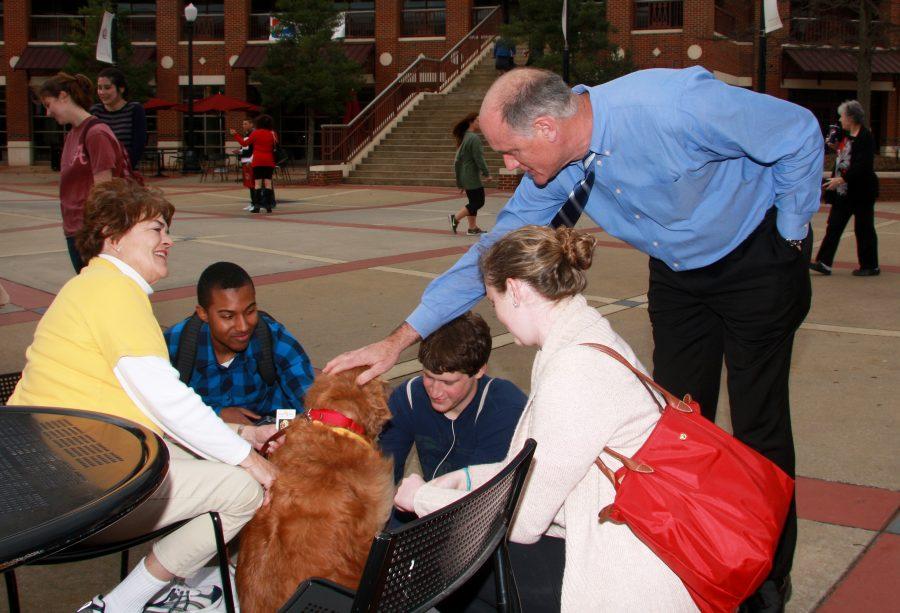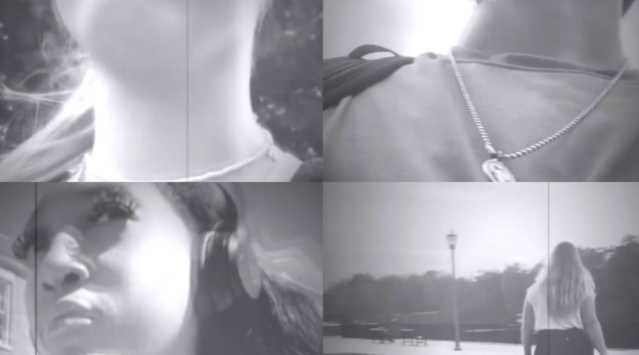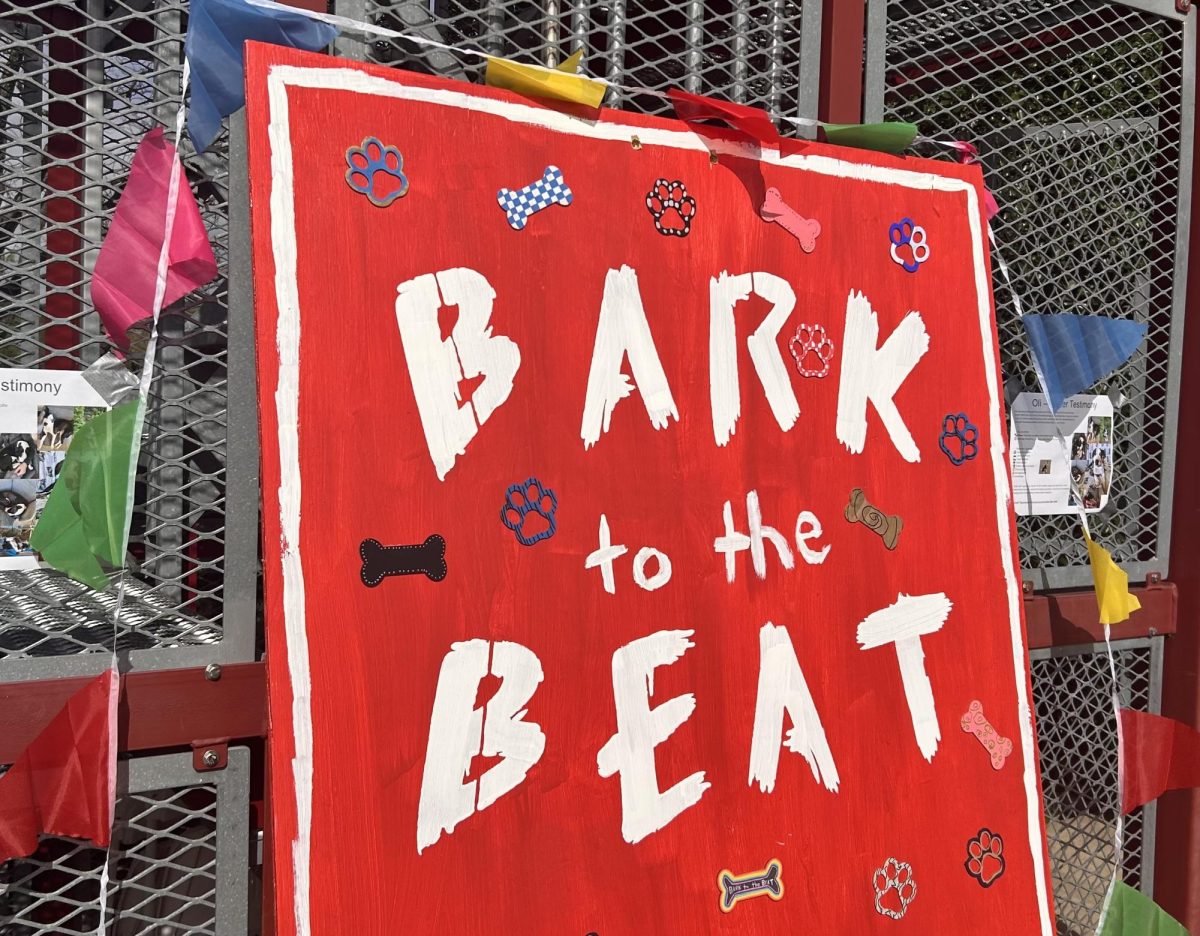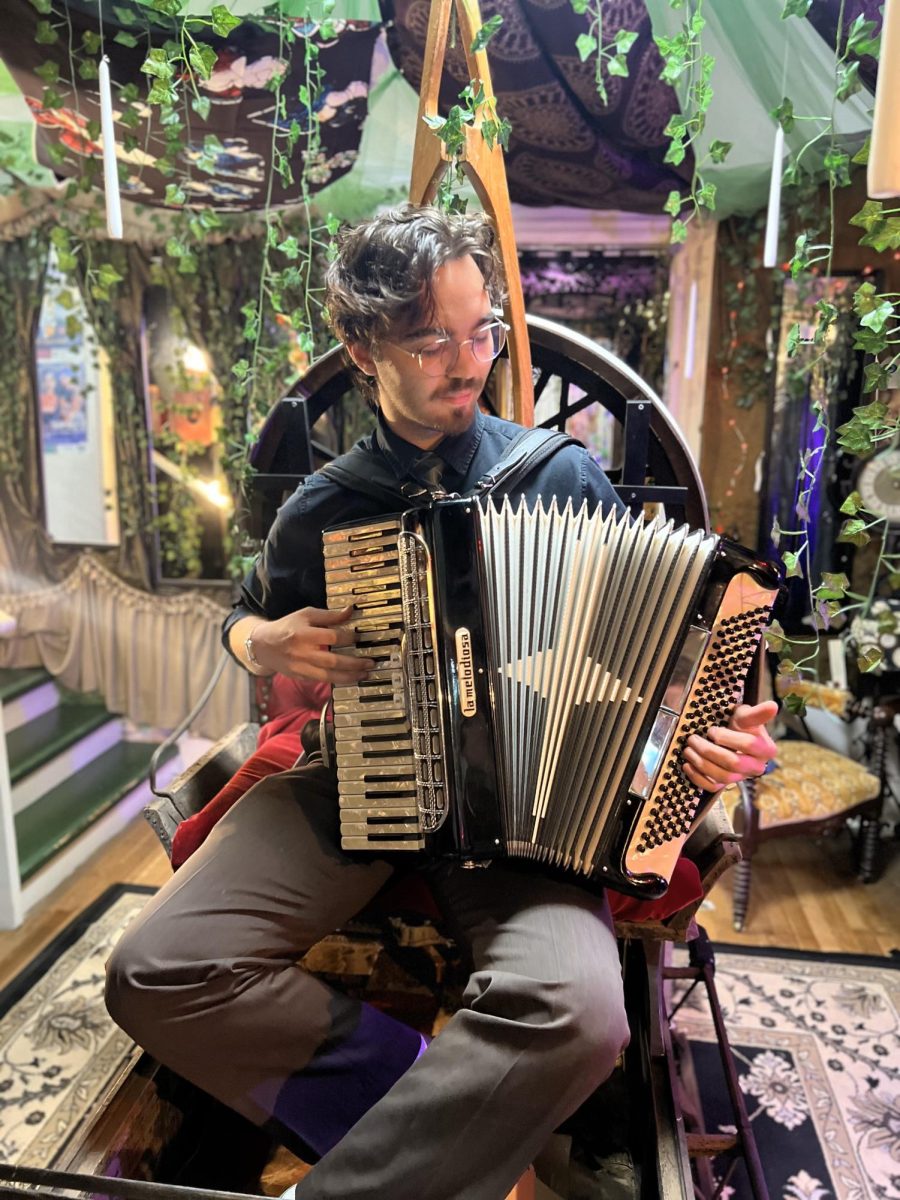History has shown that throughout the ages dogs have been a source of loyal companionship to all of mankind. From working, to herding, to hunting, canines have done almost everything imaginable to earn the title of man’s best friend, but in recent years, dogs have taken on a more unconventional role in the stress-filled lives of college-aged students.
Stress and anxiety is on the rise across the United States. According to the American Institute of Stress, 44 percent of Americans feel more stressed than they did five years ago, and one in five people experience “extreme stress events,” such as depression, on a daily basis. This fact is even more evident in college students across the country.
According to the 2015 National College Health Assessment, 51.3 percent of college-aged students said they felt overwhelming anxiety. In the same report, 84.3 percent have felt overwhelmed by everything they had to do in the past year and 46.3 percent said that the stress of academics has been traumatic or very difficult to handle.
One organization based in Birmingham, Hand in Paw, is working to aid students in their fight against stress and anxiety by using a technique known as Animal-Assisted Therapy. The organization sends therapy teams that are comprised of a pet and handler to numerous facilities across central Alabama such as nursing homes, hospitals and schools to help improve people’s day to day lives.
Hand in Paw also sends four or five dog teams each year to The University of Alabama for what they call “Student Stress Relief Visits” to help students specifically cope with the day to day stress that weighs on their lives. Emily Cheatwood, a program director with Hand in Paw, stands firmly behind the unconventional therapy process.
“Studies show that just petting a dog can lower blood pressure,” Cheatwood said. “This fact, in turn, reduces the anxiety and stress build up that a student feels. Essentially the stress is relieved by just a simple moment with a loving animal.”
Jovana Charles, a resident advisor at The University of Alabama, has experienced and seen this stress issue first hand as a full time student and advisor to freshmen students that live in her building.
“Being a student is honestly a full time job, in and of itself,” Charles said. “School is made up of many many components that all go together and must be balanced every day and the work that goes into being successful in each component is a very difficult and stressful task.”
To Charles, stress is evident around campus if you just look around.
“You can see the stress on a person’s face when they walk by you,” Charles said. “I know that sometimes when I am having a rough day, the stress is evident on my face as well. It is a hard thing to hide.”
That is why Cheatwood enjoys the smiling faces that the therapy dogs bring to the University.
“People immediately brighten their facial expression when they see us on the quad with the dogs,” Cheatwood said. “You can see immediate change in the body language of the students. They are automatically relaxed and at ease with the situations around them no matter how stressful they may be.”
The technique is also useful for others in different situations and age groups. Renea Motte, a former volunteer with Hand in Paw, now works at the Tuscaloosa VA Medical Center. She takes her dog around to patients who deal with things such as dementia, cancer and post traumatic stress disorder.
“The dogs have such a positive impact,” Motte said. “I continue to be amazed at the level of calmness the animals bring to veterans in very stressful situations in their life.”
The positive impact of this relatively new form of therapy is felt throughout many aspects of peoples lives. Motte is confident in the results and the future of dogs being used in the medical and practical therapy field.
“The simple fact is, it doesn’t really matter what kind of day or week or even month you’re having,” Motte said. “All that animal wants to do is make you happy, and that is why this method is so effective, time and time again.”









